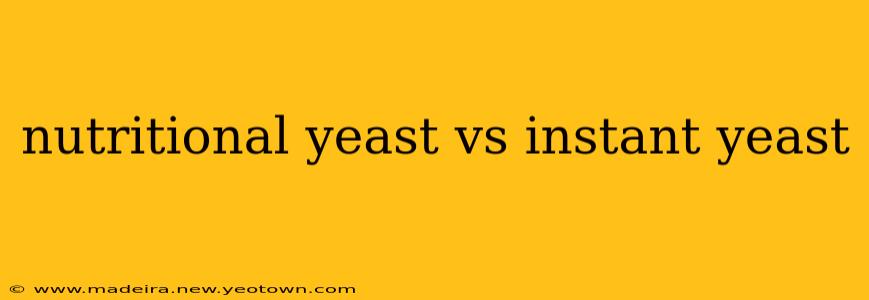Nutritional Yeast vs. Instant Yeast: A Tale of Two Yeasts
The world of baking and cooking can be surprisingly nuanced, even when it comes to something as seemingly simple as yeast. Two common types often leave cooks scratching their heads: nutritional yeast and instant yeast. While both contain the word "yeast," they are vastly different ingredients with entirely separate purposes. This isn't a battle of "better" – it's a story of understanding their unique roles in the culinary world.
What is Nutritional Yeast?
Imagine a cheesy, nutty, and slightly savory flavor – that's nutritional yeast in a nutshell. Unlike instant yeast, this deactivated yeast is a complete protein, packed with B vitamins, fiber, and other essential nutrients. Think of it as a savory, umami-rich powder that's often used as a vegan cheese substitute or a flavor enhancer in sauces, dips, and sprinkled over popcorn. It's a powerhouse of nutrition, a delicious secret weapon in vegan cooking, and has absolutely nothing to do with the leavening process of baking.
In short: Nutritional yeast is a deactivated, complete-protein powerhouse used for flavor and nutritional benefits.
What is Instant Yeast?
Instant yeast, on the other hand, is a very different beast. This active yeast is the backbone of countless breads, rolls, and other baked goods. It's a living organism that, when combined with warm water and sugar, produces carbon dioxide gas, causing dough to rise. The "instant" part simply means that it can be added directly to the dry ingredients without needing to be proofed or activated separately. It’s all about the rise!
In short: Instant yeast is a living organism used to leaven baked goods.
Can I use Nutritional Yeast Instead of Instant Yeast?
This is the million-dollar question, and the answer is a resounding no. Nutritional yeast is deactivated – meaning it's not alive and therefore cannot create the carbon dioxide needed to make bread rise. Trying to substitute it in a bread recipe would result in a flat, dense, and frankly disappointing loaf.
Can I use Instant Yeast Instead of Nutritional Yeast?
Similarly, you can't swap them. Instant yeast is designed for leavening, and sprinkling it on popcorn wouldn't produce a pleasant taste. While it might not make you ill, it certainly wouldn't impart the cheesy, nutty flavor that nutritional yeast provides.
What are the key differences between Nutritional and Instant Yeast?
Here's a table summarizing the key differences:
| Feature | Nutritional Yeast | Instant Yeast |
|---|---|---|
| Type | Deactivated yeast | Active yeast |
| Purpose | Flavoring, nutrition | Leavening (making bread rise) |
| Taste | Cheesy, nutty, savory | Neutral (mostly undetectable in baked goods) |
| Use | Vegan cheese substitute, seasoning | Bread, rolls, pastries |
| Living organism? | No | Yes |
What are the benefits of each type of yeast?
Nutritional Yeast Benefits:
- High in protein: A complete protein source, providing all essential amino acids.
- Rich in B vitamins: Excellent source of B12, crucial for vegans and vegetarians.
- Good source of fiber: Aids in digestion and promotes gut health.
- Versatile flavor enhancer: Adds a unique cheesy flavor to various dishes.
Instant Yeast Benefits:
- Essential for baking: The key ingredient for creating light and airy bread.
- Convenience: Instant varieties eliminate the need for pre-activating.
- Widely available: Easily found in most grocery stores.
In conclusion, while both contain the word "yeast," nutritional yeast and instant yeast are completely different ingredients with unique culinary applications. Understanding their distinct roles is key to successful cooking and baking. They're not competitors, but rather valuable allies in any kitchen, each serving its unique and essential purpose.

